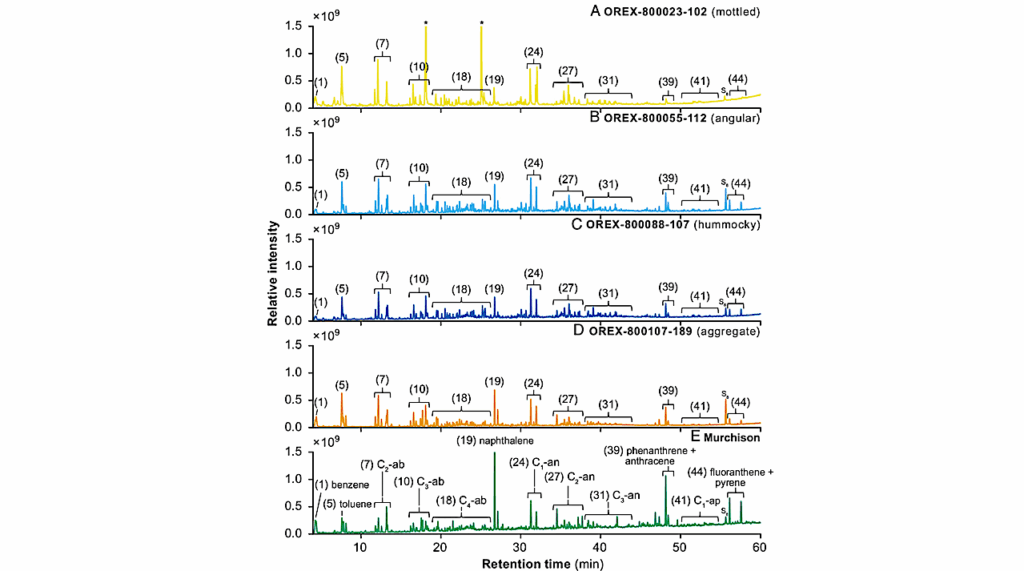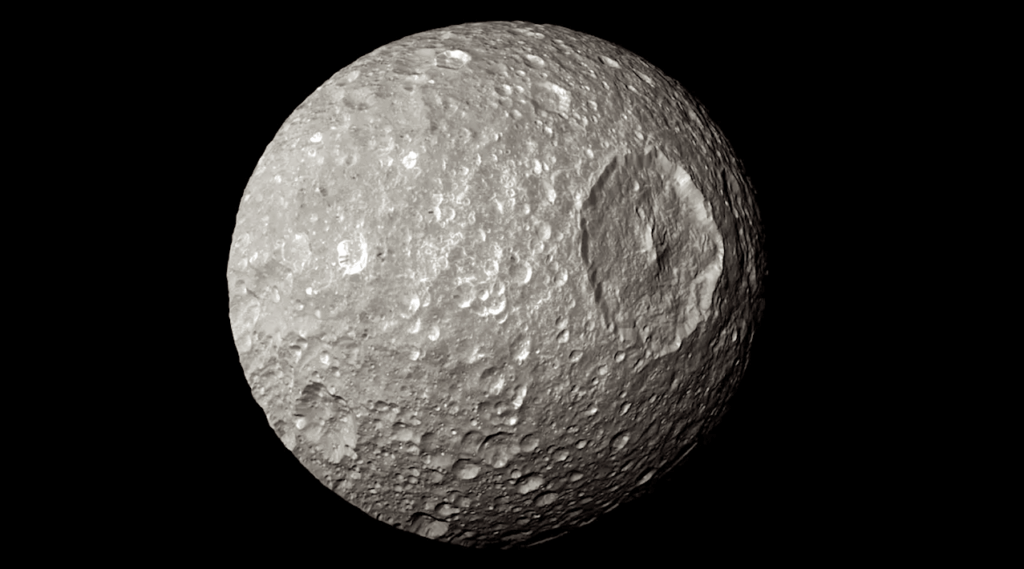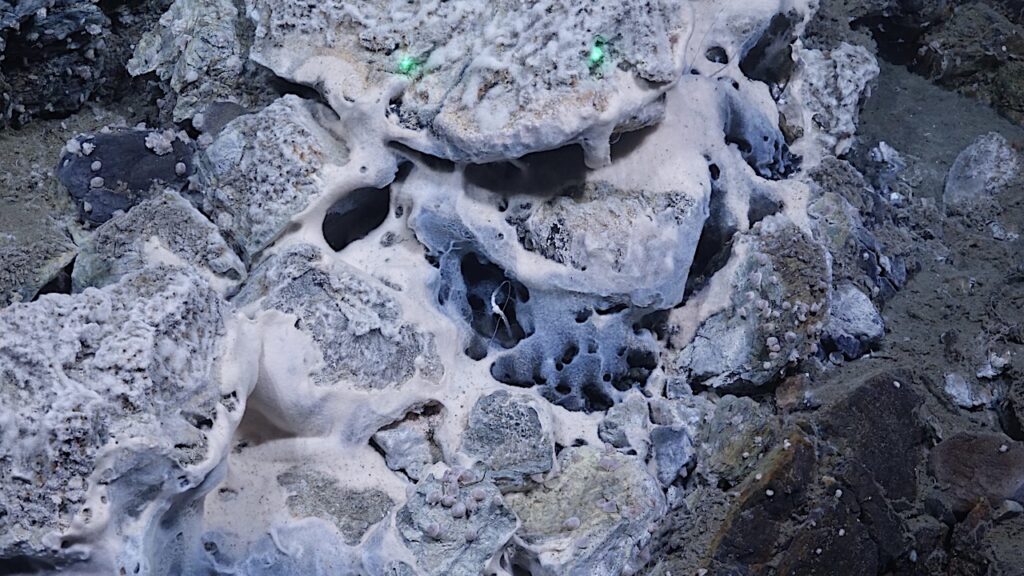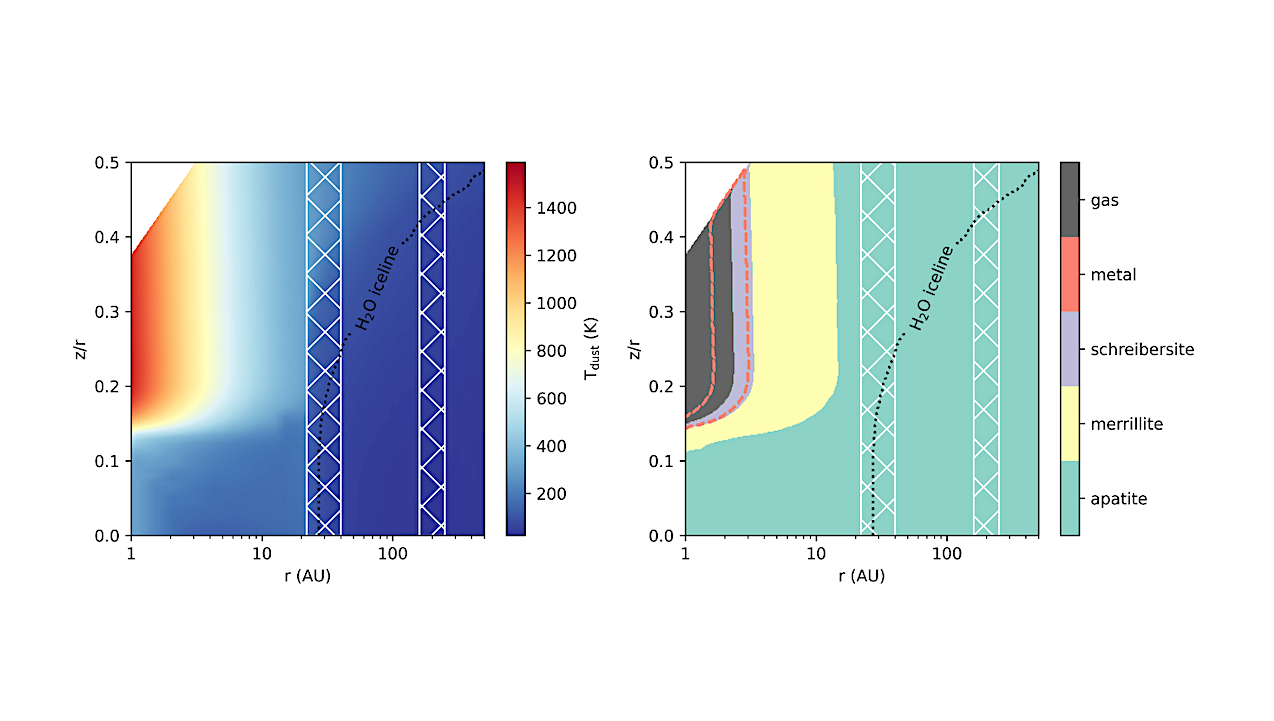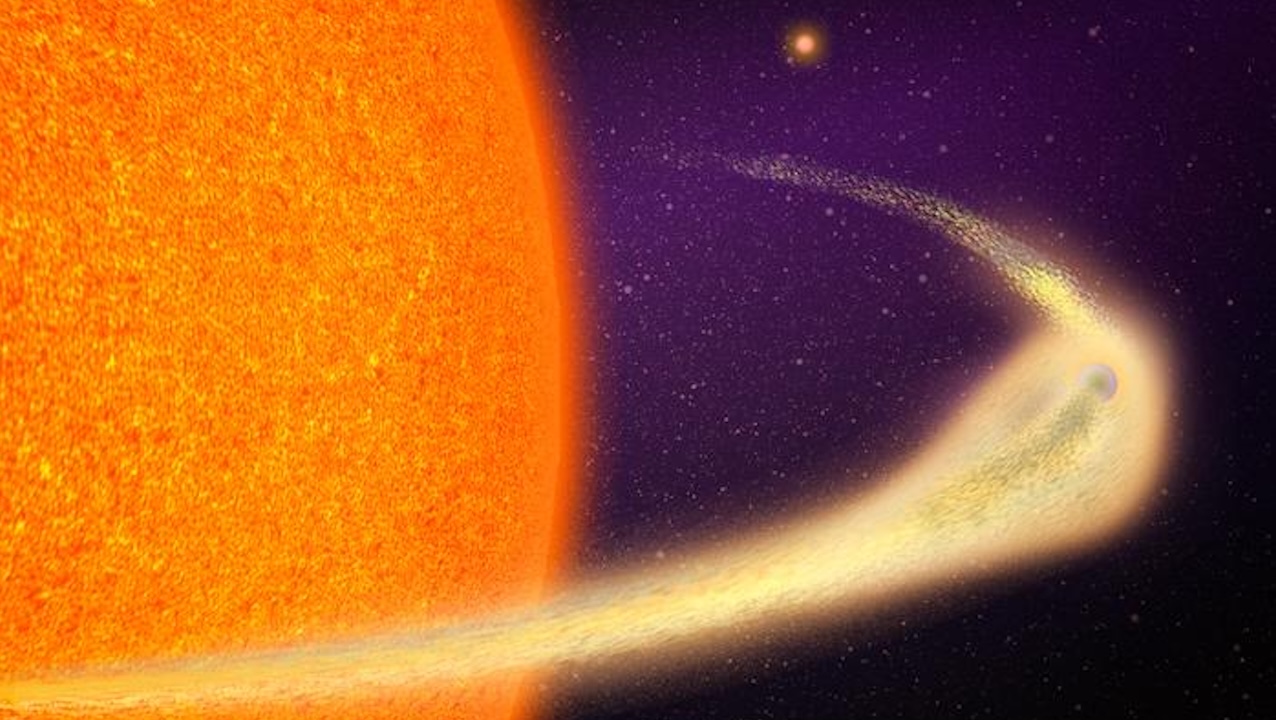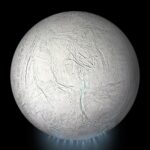Now Reading: Ice Sublimation In The Dynamic HD 100453 Disk Reveals A Rich Reservoir Of Inherited Complex Organics
-
01
Ice Sublimation In The Dynamic HD 100453 Disk Reveals A Rich Reservoir Of Inherited Complex Organics
Ice Sublimation In The Dynamic HD 100453 Disk Reveals A Rich Reservoir Of Inherited Complex Organics
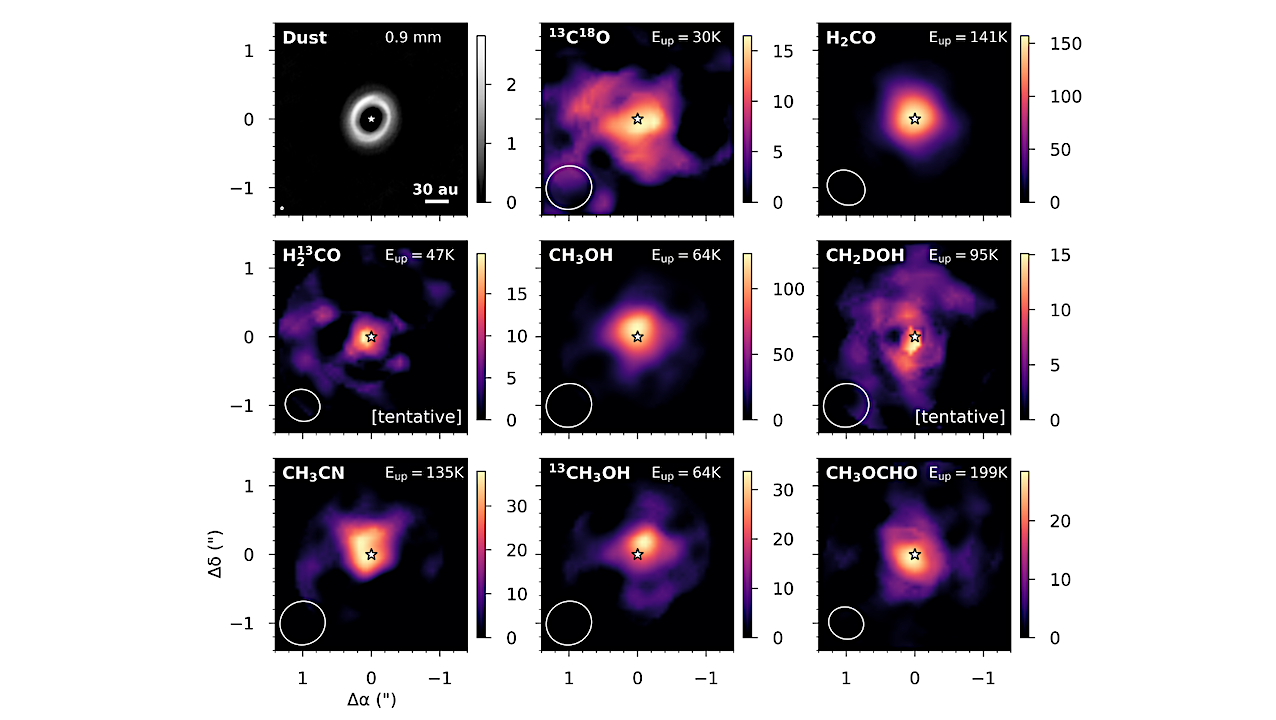

Integrated intensity maps of the 0.9 mm dust continuum emission (taken from Rosotti et al. (2020)) and molecular line emission from the HD 100453 disk. For the line maps, the top right text notes the upper-energy level of the transition shown (see Table 1) and in all plots the beam is shown in the bottom left corner of each panel. The units of the color bar are mJy beam−1 km s−1 for the molecular lines and mJy beam−1 for the continuum and the position of HD 100453 A is marked with a star. — astro-ph.EP
Protoplanetary disks around luminous young A-type stars are prime observational laboratories to determine the abundances of complex organic molecules (COMs) present during planet formation.
In contrast to their lower stellar mass counterparts, these warmer disks contain the sublimation fronts of complex molecules such as CH3OH on spatial scales accessible with the Atacama Large Millimeter/submillimeter Array (ALMA). We present ALMA observations of the Herbig Ae disk HD 100453 that uncover a rich reservoir of COMs sublimating from the dust cavity edge.
In addition to CH3OH, we detect 13CH3OH for the first time in a Class II disk, revealing a factor of three enhancement of 13C in the disk large organics. A tentative detection of CH2DOH is also reported, resulting in a D/H of 1-2%, which is consistent with the expected deuterium enhancement from the low temperature CH3OH formation in molecular clouds and with the deuteration of CH3OH measured in comets.
The detection of methyl-formate (CH3OCHO), at only a few percent level of CH3OH is an order of magnitude lower compared to claims towards other organic-rich Herbig Ae disks but is more in line with organic abundance patterns towards the earlier stages of star formation.
Together these data provide multiple lines of evidence that disks, and therefore the planet and comet-forming materials, contain inherited interstellar ices and perhaps the strongest evidence to date that much of the interstellar organic ice composition survives the early stages of planet formation.
Alice S. Booth, Lisa Wölfer, Milou Temmink, Jenny Calahan, Lucy Evans, Charles J. Law, Margot Leemker, Shota Notsu, Karin Öberg, Catherine Walsh
Comments: Accepted to ApJL, 16 pages, 5 figures
Subjects: Earth and Planetary Astrophysics (astro-ph.EP); Astrophysics of Galaxies (astro-ph.GA); Solar and Stellar Astrophysics (astro-ph.SR)
Cite as: arXiv:2504.14023 [astro-ph.EP] (or arXiv:2504.14023v1 [astro-ph.EP] for this version)
https://doi.org/10.48550/arXiv.2504.14023
Focus to learn more
Submission history
From: Alice Booth
[v1] Fri, 18 Apr 2025 18:26:27 UTC (13,651 KB)
https://arxiv.org/abs/2504.14023
Astrobiology, Astrochemistry,
Stay Informed With the Latest & Most Important News
Previous Post
Next Post
-
 012024 in Review: Highlights from NASA in Silicon Valley
012024 in Review: Highlights from NASA in Silicon Valley -
 02Panasonic Leica Summilux DG 15mm f/1.7 ASPH review
02Panasonic Leica Summilux DG 15mm f/1.7 ASPH review -
 03How New NASA, India Earth Satellite NISAR Will See Earth
03How New NASA, India Earth Satellite NISAR Will See Earth -
 04And Thus Begins A New Year For Life On Earth
04And Thus Begins A New Year For Life On Earth -
 05Astronomy Activation Ambassadors: A New Era
05Astronomy Activation Ambassadors: A New Era -
06SpaceX launch surge helps set new global launch record in 2024
-
 07Space Force plans new ‘Futures Command’ amid pressure to speed up modernization
07Space Force plans new ‘Futures Command’ amid pressure to speed up modernization












